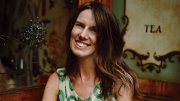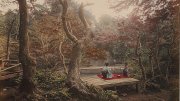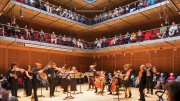William Brooks Cabot was enjoying his typical summer vacation. He was alone, fly-bitten, a thousand miles from friends and family, and immensely happy. "The night was clear, there was a white frost, and the mosquitoes slept through as well as I," he wrote near the end of a 70-day journey in 1905. "The northern lights were visible, moving and pausing in many weird forms....It was a night for a king."
Cabot was born in Brattleboro, Vermont, but lived much of his life around Boston. He made his fortune designing some of the most technologically advanced projects of the day: bridges over the Charles River, five miles of the Catskill aqueduct that brought water to New York City, and subway tunnels under Times Square. Yet his true passions were the wild waterways and Indian lands of northern Canada. Beginning in 1899, long before adventure travel was in vogue, he made annual treks to the north, occasionally with friends but often alone, spending months canoeing and hiking through the wilderness of Quebec and Labrador.
In the early 1900s, much of northern Labrador was a blank space on maps; Cabot's photographs captured what would soon be a disappearing landscape. Trekking alone was risky, but Cabot's stamina was impressive. While traveling the Labrador coast, he often rowed miles at night, skirting icebergs and reefs and finding his way by the moon. He portaged his canoe for miles up hills and through swamps between lakes and rivers. Yet his wanderings today are measured by more than the waterways he navigated or the miles of insect-infested lands he traversed.
"My objective was Indians," he wrote in his book In Northern Labrador, first published in 1912. "They were people in the primitive hunter stage. Nowhere else, perhaps, was the like of these Indians to be found, a little group of a race high in personality, yet living substantially in the pre-Columbian age of the continent....They lived under their own law, in their old faith unchanged." Some of the artifacts he gathered--including a drum, a bow and arrow, caribou-skin mittens and a pouch, and moccasins--are on display today at Harvard's Peabody Museum of Archaeology and Ethnology. His journals and photographs form an invaluable anthropological record of the region's native people before they lost much of their traditional culture.
Cabot encountered the natives of Labrador just before a crash in the caribou population drove them to the coast. "His photographs are priceless, in the sense that they are the only ones," says Stephen Loring, an anthropologist with the Smithsonian Institution's Arctic Studies Center who has studied Cabot's papers and retraced some of his journeys. "By the time anthropologists became interested, things had already dramatically changed."
Cabot first learned about the Naskapi (now called the Innu), the nomadic caribou hunters, on a trip through northern Quebec in the winter of 1899. He returned to the region eight times between 1903 and 1910 to meet with them and learn their language. "I wanted to see something of the intimate life of the Indians, and it is hard to find white men who care for that sort of thing," he wrote. His preference for solitary expeditions served him well. Groups of white strangers, he found, tended to unnerve the natives, while lone travelers were usually welcomed. In 1906, he realized his dream of joining the Naskapi for part of a major hunt, at a narrows on Lake Mistinipi, during which more than 1,500 caribou were speared and their carcasses processed for the winter ahead.
In 1910, however, he violated his self-imposed rule. Accompanied by four other white men, he encountered a large Naskapi camp on Indian House Lake. The Naskapi were upset and Cabot's own companions were equally nervous. "One of my friends, and of great Eskimo experience at that, came to me and said with growing intensity, 'Now we've stayed overnight and we've seen everything, you've got your photographs--let's go!'" he reported afterward. He never returned to the northern Naskapi homeland.
He did continue his travels in northern Quebec, occasionally in the company of Naskapi, until a 1920 accident--he cut his leg badly with an axe--finally compelled him to end his wandering in the wilderness. He kept up with his passion for native languages by writing a study of New England Indian place names. Except for the pictures published in his books, he rarely exhibited his photographs. But the images have resonated deeply with the descendants of the men and women he met almost a century ago. The Innu have put some of Cabot's pictures on their website (www.innu.ca), along with maps showing some of his journeys through the region.
Loring, who travels frequently to northern Labrador for his own research, recalls a night several years ago in the community of Davis Inlet, an Innu community ravaged at the time by a wave of suicides and alcoholism. He had brought slides of Cabot's pictures to show in a community center. The hall "just got thicker and thicker with cigarette smoke and the beam of the slide projector was like a time machine illuminating the wall," Loring says. "The kids got quiet and the old people were just blown away, I think, to see the photographs. It really is an amazing legacy."
John Dillon is a Vermont writer who covers environmental issues.





